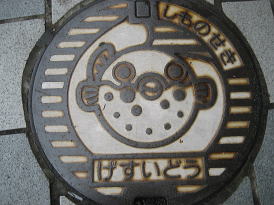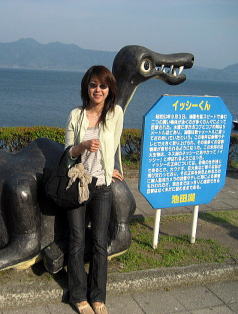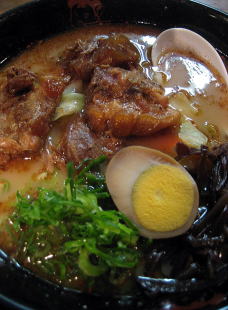Half an hour further south, there's a lake Ikeda, which once enjoyed (though
short lived) fame as a trout's fishery.
Though no news of giant trout for a decade or two, in its place stands
a statue of mysterious monster Issie, named after, you know what.
Now it's time to turn north and head home.
On the way, in Hiyoshi city, we visited a locally famous "Ghost temple" dating back to an old story of a women and a monk.
We have countless such ghost stories, a few comical, many ominous. I sometimes
feel it is these creepy stories that enriched the secular lives of pre-westernization
era.
In Kumamoto city, we visited the famed castle of Kumamoto - one of the
three most acclaimed castles that survive to this day.
The stone walls are laid so no one, even a ninja cannot scale up. Masterpiece
of 4 centuries ago.
Chiran also was the place where many Kamikaze suicide bombers took off
toward the last phase of the doomed WWII.
Over a thousand young pilots flew off to the journey of no return, with
one way petrol and a heavily laden bomb.
Down town Kagoshima is another great venue for gourmet on a shoestring.
Next we took a road further down south, to Kagoshima, the southern most
prefecture of mainland Japan.
In the town of Chiran, we visited Bukeyashiki, that boasts a well preserved
traditional Samurai homesteads.
If one thing that made Shimonoseki famous, it's Fugu, or the ball fish.
Deadly poisonous as widely known, but when thoroughly bled and cleaned,
they are the tastiest fish, or so claimed by many a fugu lovers. Well,
that was the end of our Kyushu visit, with some fishing along the way.
- Back

Kyuushuu in May '07 - 4
And again here downtown Kumamoto, gourmet circuit on a shoe string.
The active volcano of Kaimon-dake looms up at the end of a country road.
The last stop of the trip was in Shimonoseki, Yamaguchi pref.










